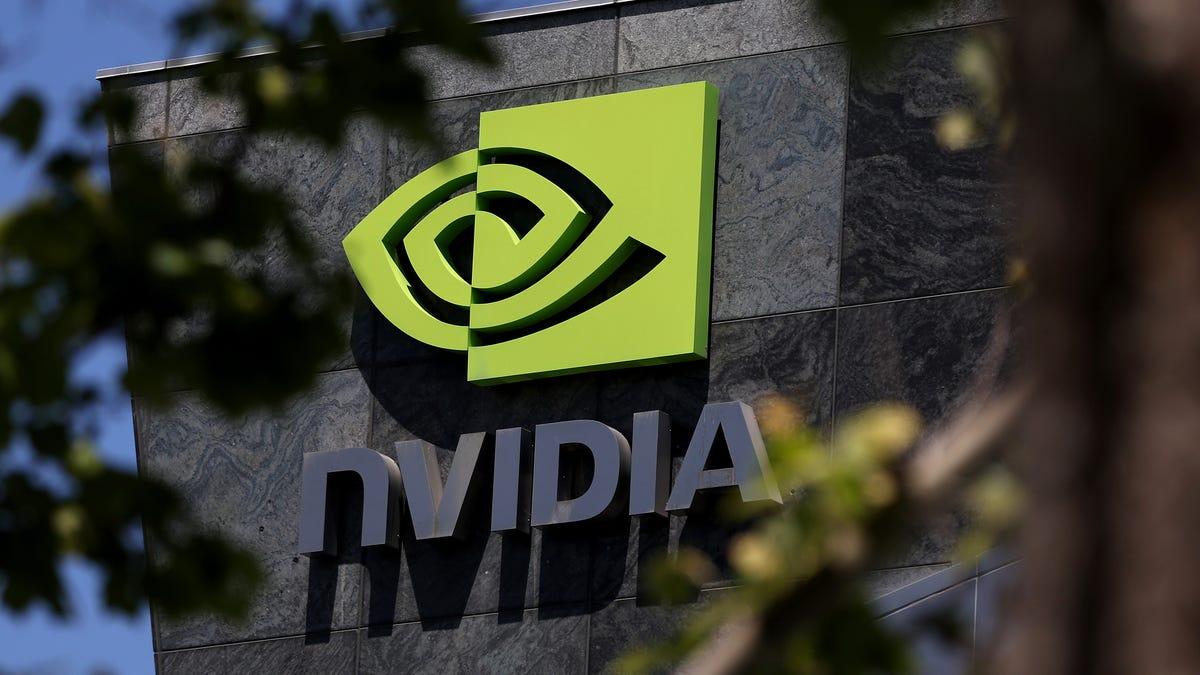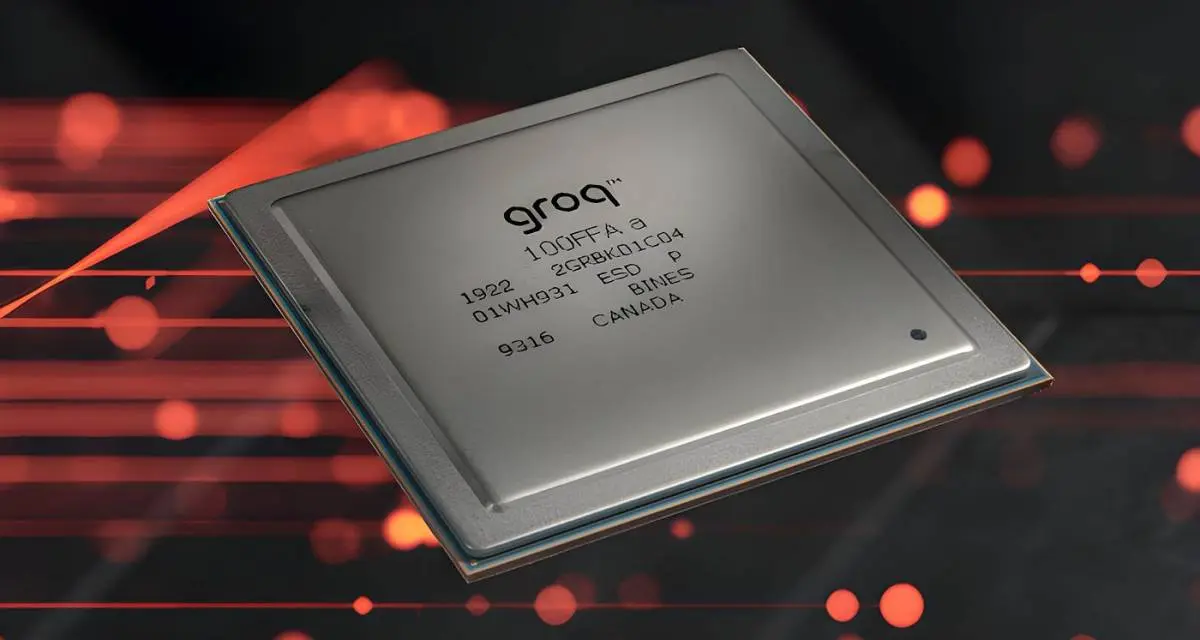Nvidia Stock: Analyzing the Potential for Buying Opportunities Amid Market Fluctuations
2 Sources
2 Sources
[1]
When To Buy Back Into Nvidia--Should You Look At Valuation, Price Movement, Or Both? - NVIDIA (NASDAQ:NVDA)
Nvidia Pulls Back In a post earlier this month, we looked at when to sell Nvidia Corporation NVDA. Nvidia shares have slid recently... With market observers presenting a few different narratives to explain it: A market rotation from mega caps to small caps in advance of rate cuts. Concerns about possible Trump tariffs and export controls impacting chipmakers. Questions about whether "the AI bubble popped". I'm skeptical of the third narrative, but let's put all three in the "too hard" pile for now and focus on entries and exits. Let's recap our exit logic first, and then we'll address when it might make sense to go long Nvidia again. Exiting Nvidia In my previous post, I wrote about how I decided when to exit Nvidia, giving specific examples of trading both the stock and options on it: When To Sell: Valuation Versus Price Movement One way to decide when to sell is to use a valuation metric, like the PEG ratio we looked at above. A drawback of that, though, is that a stock can trade at an elevated valuation for years, and you can miss out on a lot of gains that way. The approach we use in my trading Substack is going by price movement. Here are specific examples from my own trading of Nvidia. Trading Nvidia Shares I bought Nvidia as part of my trading Substack's core strategy, which is to buy equal dollar amounts of Portfolio Armor's top ten names, put trailing stops of 15% to 20% on them, and then replace each one with a new top ten name after we get stopped out. Using this approach, I bought Nvidia in February of 2023 and exited last April, for a gain of 259% over about 13 months (Nvidia has appeared in our top ten on multiple occasions over the last 8 years). Nvidia (NVDA 0.00%↑). Bought at $230 on 2/24/2023; stopped out at $825.06 on 4/18/2024. Profit: 259%. Trading Nvidia Options One difference between stocks and options is that options expire, so there's no place for diamond hands: if you don't sell or exercise before expiration, your options will expire worthless. Most of the options trades we do in my trading Substack are spreads, where the maximum possible gain and loss are pre-defined, What I do in those cases is open a GTC order to exit at about 95% of the spread, and lower that price, if necessary, as the expiration date approaches. Here are a couple of examples of me doing this trading Nvidia options. Call spread on Nvidia (NVDA 6.15%↑). Entered at a net debit of $2.10 on 2/20/2024; exited at a net credit of $4.74 on 2/22/2024. Profit: 126%. Call spread on Nvidia (NVDA 0.00%↑). Entered at a net debit of $3 on 5/21/2024; exited at a net credit of $9.45 on 5/23/2024. Profit: 215%. Those were both earnings trades. The spread between the strike prices on the first one was $5, and on the second one, $10. I placed the second trade after I started my current practice of aiming for ~200% gains on options spreads. When I'd Buy Nvidia Shares Again The next time I get stopped out of one of my ten core strategy holdings, if Nvidia is a current Portfolio Armor top ten name, I'll buy it again, as I did back in February of 2023, but a trailing stop of 15% to 20% on it, and let it ride again. Easy-peasy. When I'd Place A Bullish Options Trade On Nvidia Again I'd like to see a slightly better valuation on Nvidia with the stock still showing strong technicals. Let's quantify that. Currently, according to Chartmill data, here's what Nvidia looks like on three specific metrics (all of these are on range from 0 to 10, with 10 being the best): Technical Rating: 9 Set-up Rating: 2 Valuation Rating: 5 The technical and valuation ratings are self-explanatory; the set-up rating measures the short-term consolidation of share prices. Here's what I'd like to see before I place my next bullish options trade on Nvidia: Technical Rating: 6 or greater. Set-up Rating: 6 or greater. Valuation Rating: 6 or greater. I set up an alert to notify me when Nvidia meets all three of those criteria. At that point, I'll investigate it further, and if it looks promising, I'll place another bullish bet on it. If you'd like a heads up when I place that trade, feel free to subscribe to my trading Substack/occasional email list below. And if you're worried about the AI bubble popping, consider downloading the Portfolio Armor iPhone app to hedge your AI-related stocks. If you'd like to stay in touch You can scan for optimal hedges for individual securities, find our current top ten names, and create hedged portfolios on our website. You can also follow Portfolio Armor on X here, or become a free subscriber to our trading Substack using the link below (we're using that for our occasional emails now). This article is from an unpaid external contributor. It does not represent Benzinga's reporting and has not been edited for content or accuracy. Market News and Data brought to you by Benzinga APIs
[2]
Downside targets to watch for Nvidia, according to the charts
It's time to consider downside targets for A.I.-darling Nvidia. The first half of 2024 was all about stocks like Nvidia Corp. (NVDA) riding the A.I. frenzy to extremely high valuations. And while that theme meant huge gains for semiconductors and other growth stocks, the charts are beginning to suggest that the dominance of mega cap growth may not be the story in the coming months. On the short-term chart of NVDA, we can see a series of bearish engulfing patterns in mid-June and again in mid-July. This two-day candle pattern, with an up day followed by a down day that "engulfs" the price action of day one, represents a short-term reversal in sentiment. So as Nvidia is testing $140, this pattern showed that traders were selling that strength. And when the price returned to that price range earlier this month, we saw the same pattern of short-term distribution. With the stock already down about 15% from those recent all-time highs, how can we measure the likelihood of a further retracement of the long-term uptrend? That peak from earlier in July around $135 is a confirmed lower high, showing that investors are finally unable to push the price past its previous extreme. This suggests a potential stall in the long-term uptrend. But as long as NVDA makes a higher low on the subsequent pullback, the uptrend could still be considered in place. With Nvidia currently sitting around $120, this represents a test of the most recent swing low in mid-June. This support level also lines up with a 38.2% Fibonacci retracement of the April to June rally phase, and also lines up with the 50-day moving average. What if it breaks support? So a confirmed break below $120 would mean a new swing low, a failure to hold the first Fibonacci support level, and the first move below the 50-day moving average since the April low. If NVDA would push below $120, I'd consider the next downside objective to be around $100. This level would coincide with the 61.8% retracement level, as well as the 200-day moving average. A drop to $100 would mean almost a 30% haircut off the June peak for NVDA, and would most likely have a fairly negative impact on the S & P 500 and Nasdaq 100 given its weight in those indexes. If Nvidia is able to establish a lower around current levels, then finally propel above the June and July highs, then there could be plenty of further upside for this mega cap semiconductor stock. But the charts are suggesting that a more cautious approach into August may be the more likely scenario. -David Keller, CMT marketmisbehavior.com DISCLOSURES: (None) All opinions expressed by the CNBC Pro contributors are solely their opinions and do not reflect the opinions of CNBC, NBC UNIVERSAL, their parent company or affiliates, and may have been previously disseminated by them on television, radio, internet or another medium. THE ABOVE CONTENT IS SUBJECT TO OUR TERMS AND CONDITIONS AND PRIVACY POLICY . THIS CONTENT IS PROVIDED FOR INFORMATIONAL PURPOSES ONLY AND DOES NOT CONSITUTE FINANCIAL, INVESTMENT, TAX OR LEGAL ADVICE OR A RECOMMENDATION TO BUY ANY SECURITY OR OTHER FINANCIAL ASSET. THE CONTENT IS GENERAL IN NATURE AND DOES NOT REFLECT ANY INDIVIDUAL'S UNIQUE PERSONAL CIRCUMSTANCES. THE ABOVE CONTENT MIGHT NOT BE SUITABLE FOR YOUR PARTICULAR CIRCUMSTANCES. BEFORE MAKING ANY FINANCIAL DECISIONS, YOU SHOULD STRONGLY CONSIDER SEEKING ADVICE FROM YOUR OWN FINANCIAL OR INVESTMENT ADVISOR. Click here for the full disclaimer.
Share
Share
Copy Link
Nvidia's stock has experienced significant volatility, prompting investors to consider optimal entry points. This article examines various factors influencing Nvidia's stock performance and potential buying opportunities.

Recent Stock Performance and Market Sentiment
Nvidia Corporation (NASDAQ: NVDA) has been a focal point for investors due to its remarkable performance in the artificial intelligence (AI) sector. The stock has experienced significant volatility, with a notable decline of approximately 15% from its all-time high in June 2024
1
. This pullback has sparked discussions among investors about potential buying opportunities and the factors to consider when timing an entry into the stock.Technical Analysis and Price Targets
Technical analysts have identified key levels to watch for Nvidia's stock. The first significant support level is around $410, which represents a 23% decline from its recent peak. If this level fails to hold, the next support zone is anticipated between $350 and $360, marking a potential 35% drop from the high
2
. These levels provide investors with concrete price targets to monitor for potential entry points.Valuation Considerations
Despite the recent pullback, Nvidia's valuation remains a topic of debate. The company's forward price-to-earnings (P/E) ratio stands at approximately 33.5, which is significantly higher than the S&P 500 average of around 19
1
. This premium valuation reflects the market's optimism about Nvidia's growth prospects, particularly in the AI sector. However, it also raises questions about the stock's potential for further appreciation and the risk of overvaluation.Growth Prospects and Market Position
Nvidia's strong position in the AI chip market continues to be a driving force behind investor interest. The company's data center revenue, which includes AI-related sales, has shown impressive growth. Analysts project that Nvidia's earnings per share (EPS) could reach $20 in the next few years, potentially justifying the current valuation if these projections materialize
1
.Investor Strategies and Considerations
Given the stock's volatility and high valuation, investors are considering various strategies for approaching Nvidia. Some analysts suggest a dollar-cost averaging approach, which involves gradually building a position over time to mitigate the risk of buying at a peak
1
. Others recommend waiting for specific technical levels or valuation metrics before initiating or adding to a position.Related Stories
Market Dynamics and External Factors
The broader market context also plays a crucial role in Nvidia's stock performance. Factors such as interest rate decisions by the Federal Reserve, overall market sentiment towards technology stocks, and geopolitical events can significantly impact Nvidia's stock price. Investors are advised to consider these external factors alongside company-specific metrics when making investment decisions
2
.Long-Term Outlook vs. Short-Term Volatility
While short-term price movements and technical levels are important for timing entry points, many analysts emphasize the importance of focusing on Nvidia's long-term growth potential. The company's leadership in AI and high-performance computing positions it well for future growth, but investors should be prepared for continued volatility as the market assesses the pace and sustainability of this growth
1
2
.References
Summarized by
Navi
[1]
Related Stories
Recent Highlights
1
Google launches Gemini 3 Flash as default AI model, delivering speed with Pro-grade reasoning
Technology

2
OpenAI launches ChatGPT app store, opening doors for third-party developers to build AI-powered apps
Technology

3
OpenAI pursues $100B funding round at $830B valuation as Amazon investment talks intensify
Business and Economy








